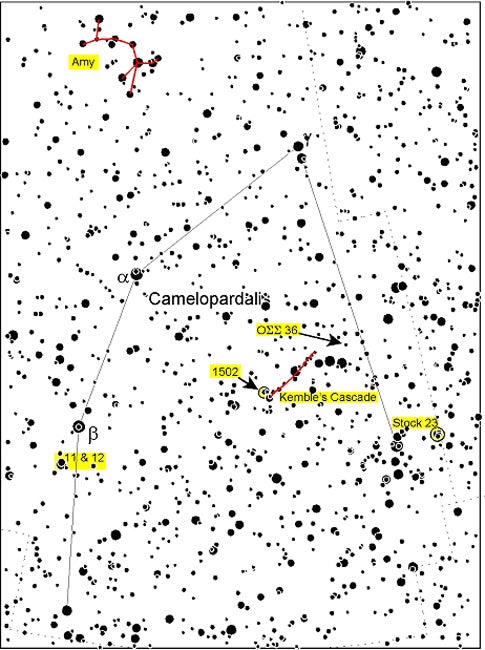OΣΣ 36 is a challenging double star set in the western part of the constellation. Large binoculars might be needed to see the 9th-magnitude companion star to the northeast of the system’s 7th-magnitude primary.
Struve 1051, located in the eastern half of the constellation, is a great test double star for 10×50 binoculars. Look for the system’s 7th-magnitude primary star accompanied by an 8th-magnitude companion just to its east.
NGC 2403 is one of the brightest non Messier galaxies north of the celestial equator. Although it lies within the borders of Camelopardalis, it’s easiest to find by looking about 5° northwest of Omicron (ο) Ursae Majoris (the Bear’s “nose”). There, you’ll see its faint oval glow set among a wide rectangle of foreground stars.










